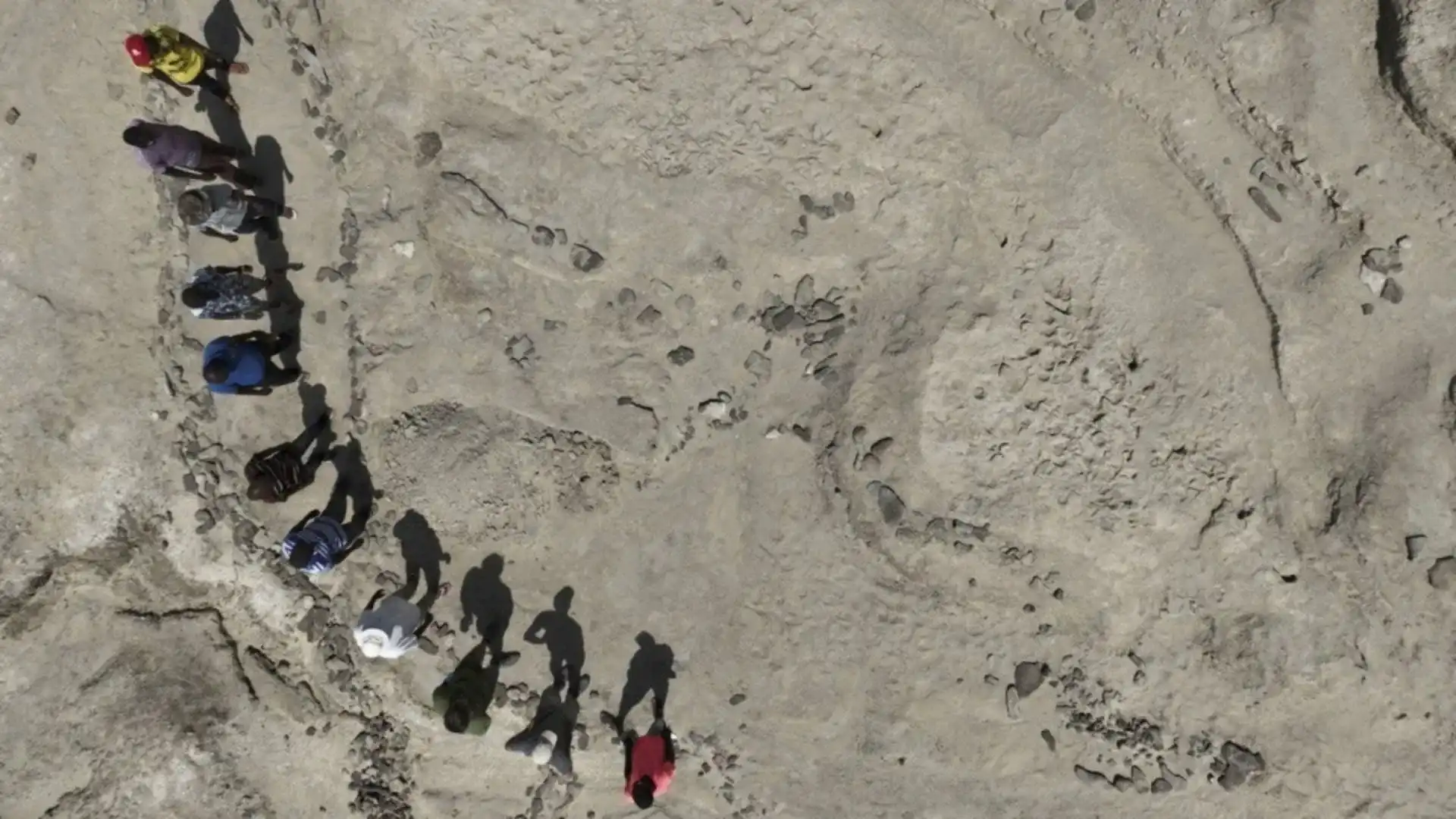Scientists have discovered an incredible set of fossilized footprints in the mud along the shores of Lake Turkana in Kenya, giving new insights into the interactions between two early human ancestors. These footprints, left by Homo erectus and Paranthropus boisei, suggest that the two species were not only contemporaries but likely coexisted in the same region about 1.5 million years ago.
A Moment in Time
The footprints, found in 2021 in the Koobi Fora region, were made within hours or a few days of one another, providing a very rare snapshot of a moment from the past. According to paleontologist Louise Leakey, who collaborated on the research published in Science, the two species probably were aware of one another’s existence. “They probably saw each other, probably knew each other was there and probably influenced each other in some way,” said Kevin Hatala, paleoanthropologist, Chatham University.
Distinct Footprints, Distinct Walking Styles
The footprints show the two species had different ways of walking. While Homo erectus walked like a modern human, heel-first and rolling over the foot, Paranthropus boisei walked differently. According to human evolutionary anatomist Erin Marie Williams-Hatala, the footprints of Paranthropus suggest that it had greater mobility in its big toe, which was not observed in Homo erectus or modern humans.
A Complex Evolution of Bipedalism
This discovery adds to the growing body of evidence that may suggest that the transition into bipedalism was not a single event but a gradual process with differences in how early hominins walked. According to paleontologist William Harcourt-Smith, fossil footprints preserve a real moment in time that may give a unique look on how these ancient ancestors would walk. “It turns out, there are different gait mechanics – different ways of being bipedal,” he noted.
ALSO READ: Mysterious Columns Of Light Illuminate Canada’s Night Sky, Create A Breathtaking Display




